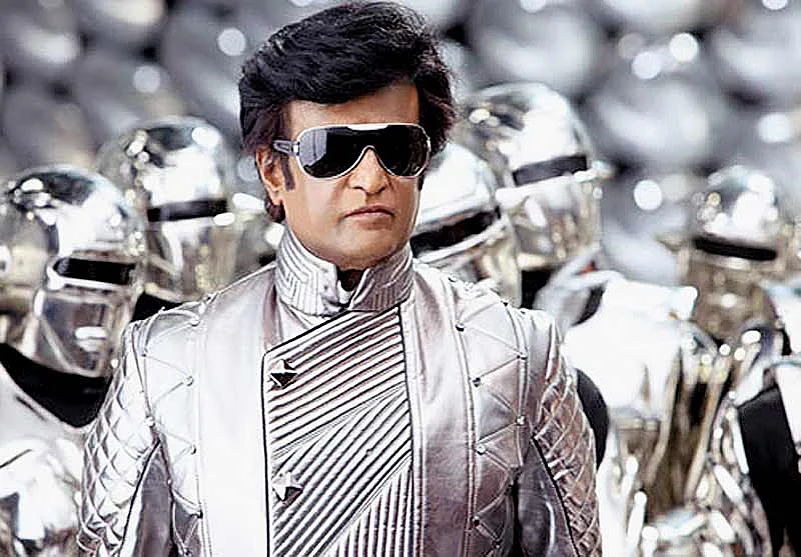Watching a newly released Rajnikanth film in one of Chennai’s cinemas is like being under a seismic attack while riding a roller-coaster. You don’t have to ask if the ground is shaking beneath your seat. It is. The whole hall is heaving as the sound, the images, the larger-than-life hero (sorry, Superstar!) swirl and thunder around you. It’s for you to experience the phenomenon and decide whether it is magic, myth or mass hysteria.
Naman Ramachandran professes to decode the enigma by calibrating the Richter scale of his opus and assuring the reader it’s the “definitive biography”. Future historians will be grateful he has kept to his brief. He follows the formulaic opening number that marks a Rajnikanth movie, a wham-bam introduction to his superstardom, as the credits roll for the 2010 film Enthiran at Satyam Theatres in Chennai. He mentions the giant cutouts of the actor, sanctified with votary dousings of milk, then cuts to the scenes inside the hall. “The decibel levels rise while the opening credits roll, and when the man himself is first seen on the screen they spiral into a crescendo. Grown men cry openly and scream ‘Thalaivaa!’ in the same tone that they probably reserve for entreaties to the Almighty...for his fans, Rajnikanth is God and for the world he is a cultural phenomenon transcending the trappings of a mere movie star. Not bad for a man who began his professional life as a humble coolie and went on to work as a modest bus-conductor before he became one of the most famous people on the planet and an Internet meme.” There you have the whole book in a nutshell.
Ramachandran unspools the star’s career film by film. He provides fine summaries of the storyline, descriptions of Rajnikanth’s fellow actors and his onscreen relationship to them. He includes crisp vignettes of the directors, their background and ideologies—all of which allowed an unknown to make his way up the ladder to fame.
Ramachandran is as meticulous as any of the superstar’s fans in enumerating his one-liners, stylistic quirks and gestures, now part of folklore: the superstar’s “cooling glasses” (which appear as an icon at the start of every chapter) and the mass of sweeping, unruly hair he sports in his screen appearances (though he isn’t afraid to show that he’s bald in real life). Are the shades worn like the protective covers laid over the figure of a god, as in the Tirupati temple, to shield mortals from his piercing gaze of divinity? Or does he wear them for mundane reasons, like some Tamil politicians, to hide his age or protect his sight from the studio glare? These are questions Ramachandran leaves to his readers to fathom.
He does, however, emphasise Rajnikanth’s dark complexion and how this became an asset when his first director K. Balachander decided to cast him. Or, as the filmmaker is quoted in the book, “I was thrilled by the fellow’s fragile health and powerful eyes and his chiseled face. The dark skin was an advantage, because again it is different from others.” It’s the opposite, one might note, of the Charlie Chaplin effect. When deconstructed, however, the Rajnikanth mystique is based on his being a small, dark man making his way into a hostile world, learning to trick his way into the hearts of his heroines and audiences with those quirks, like the Tramp’s shuffling walk, the doffing of his hat or twirling of his stick that then become a trademark. Even by Ramachandran’s accounts, while MGR was always a hero to the women in the audience, Rajnikanth appeals to the men. It’s they who weep and sigh when he appears. Though no account of the actor’s life goes without praises to his devotion to God, family, friends and so on, there’s no denying the testosterone-driven edge to his performances. Rape, incest, lust and an aggressive maleness form a part of the tandava dance that marks the career graph of Rajnikanth. Is it a wonder that he’s hailed as a god of our godless times?


























